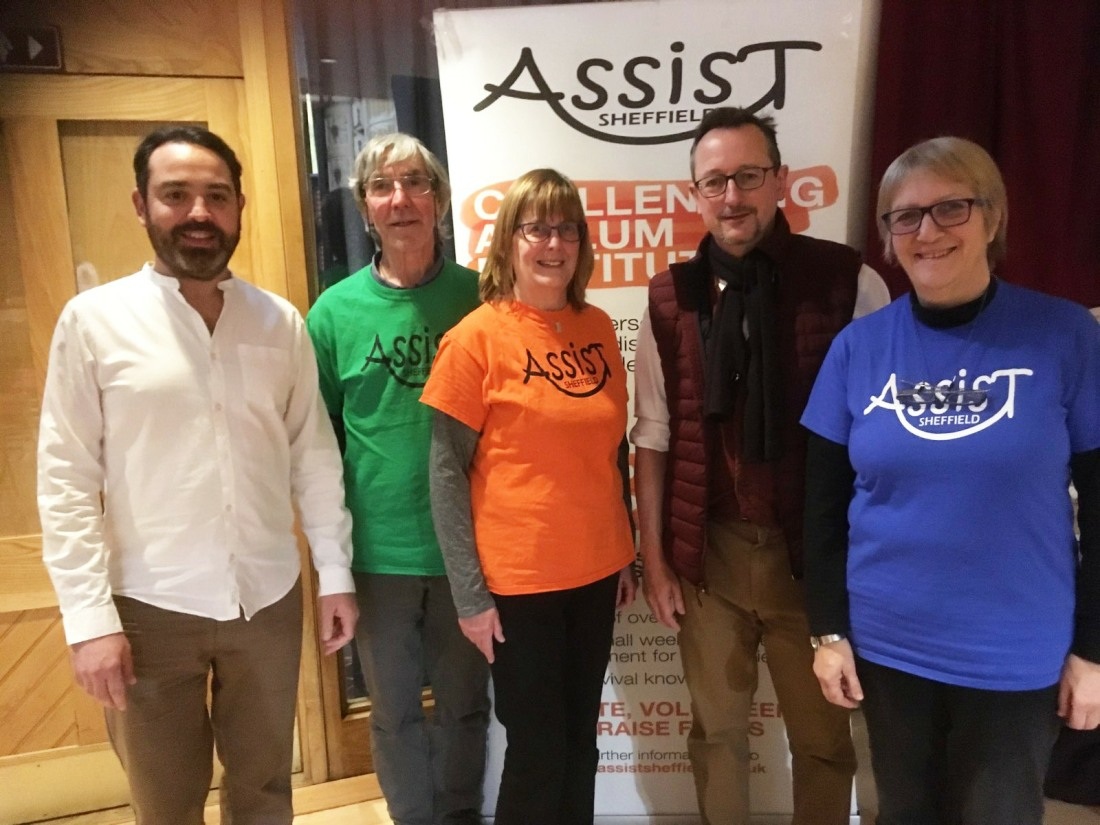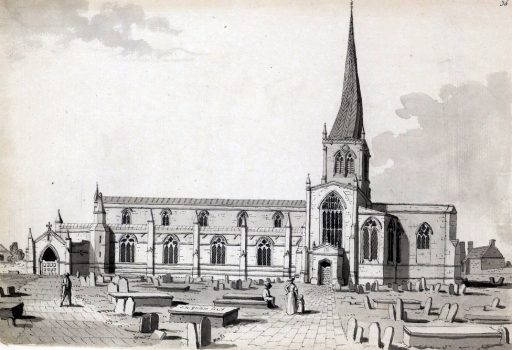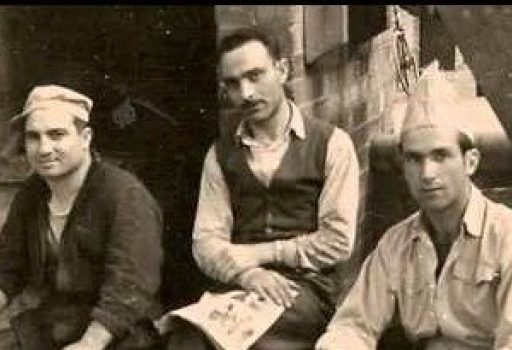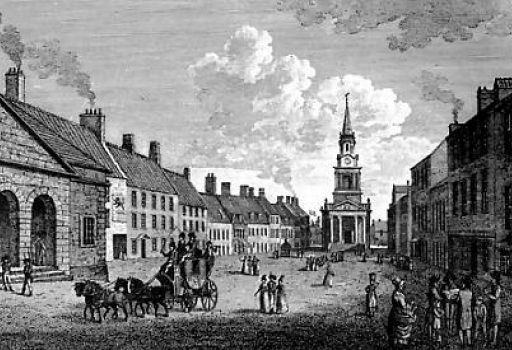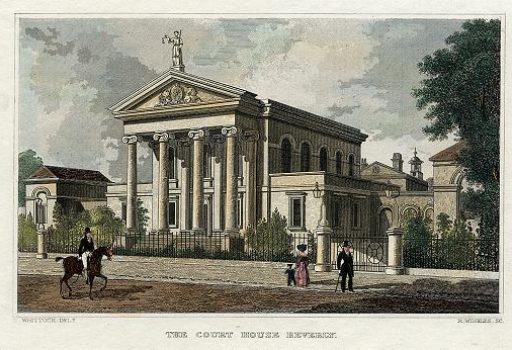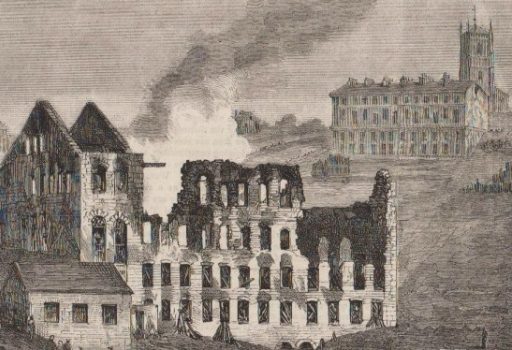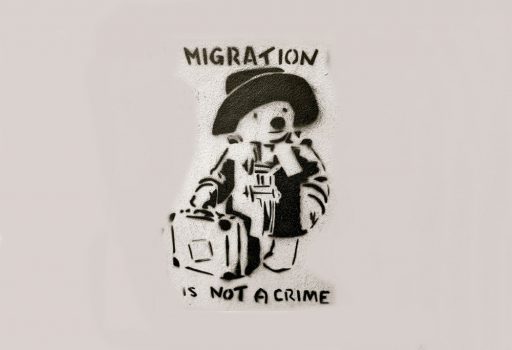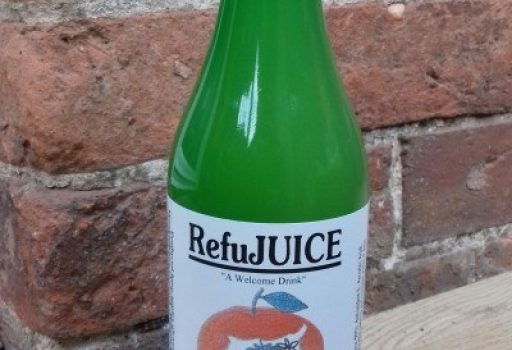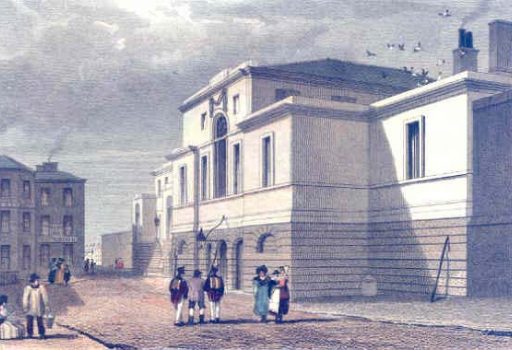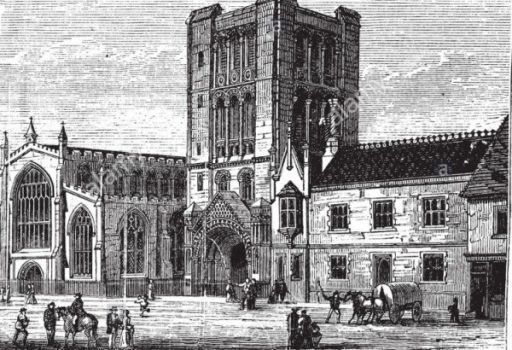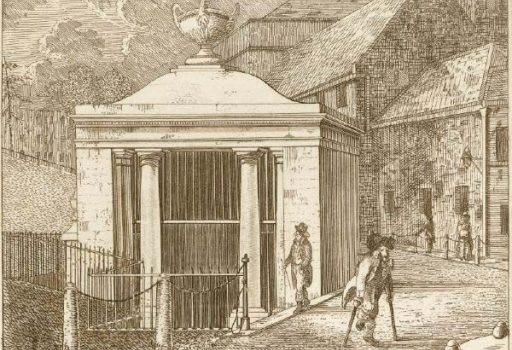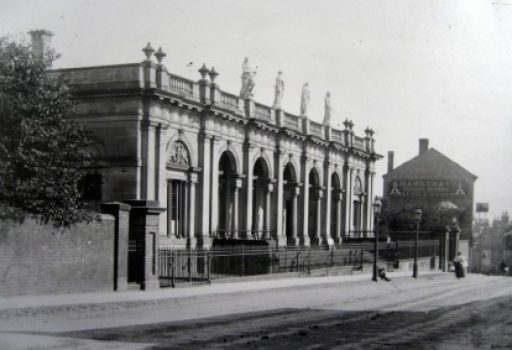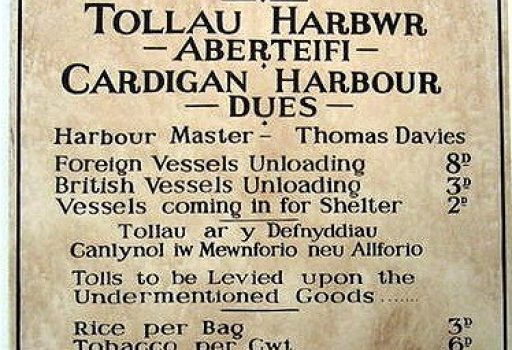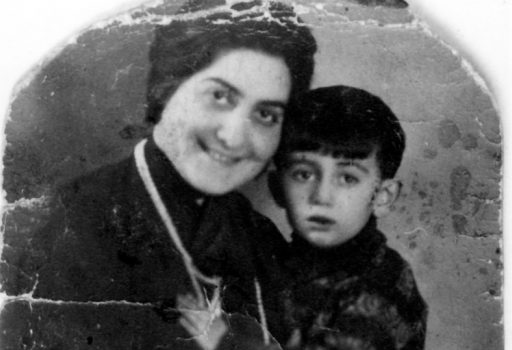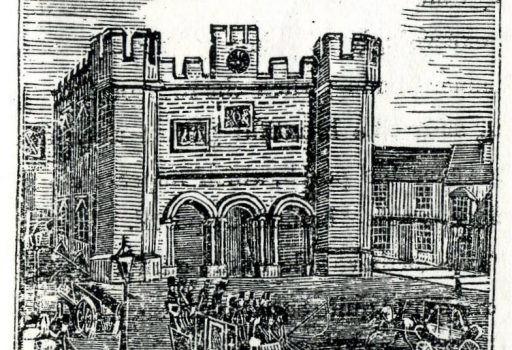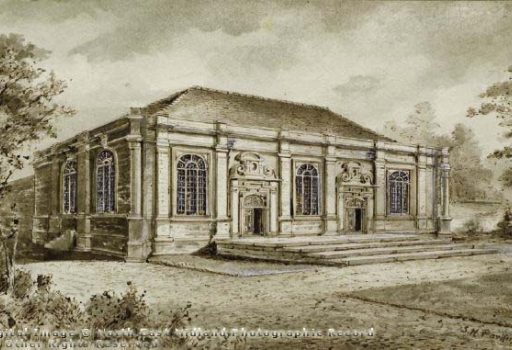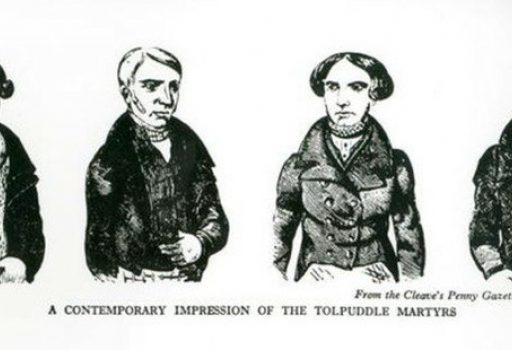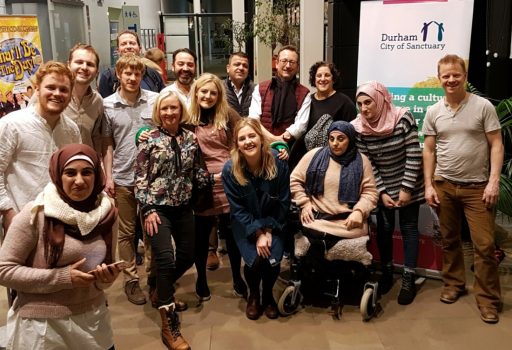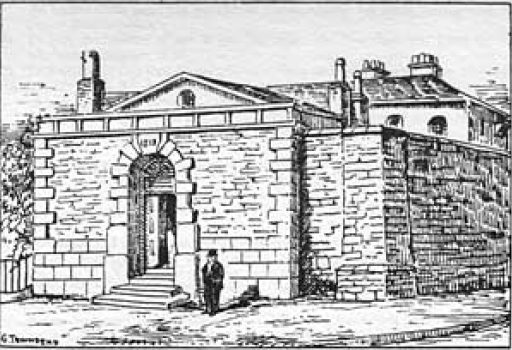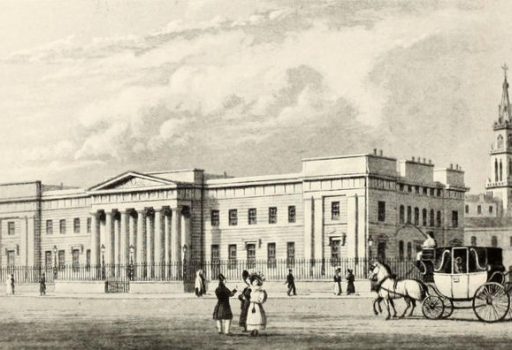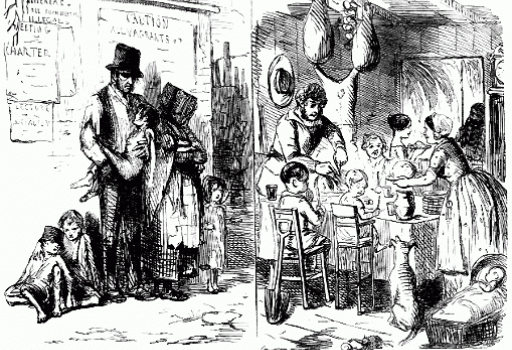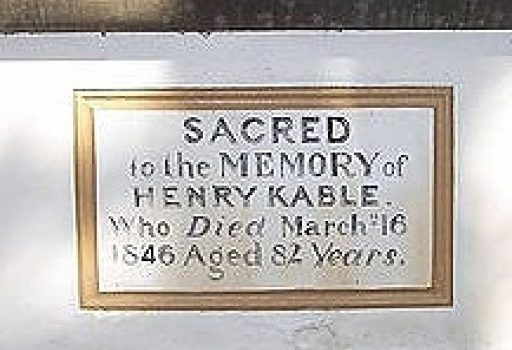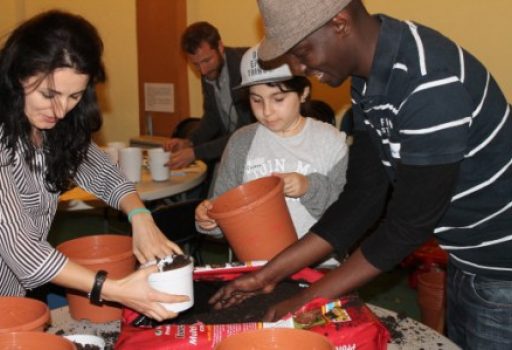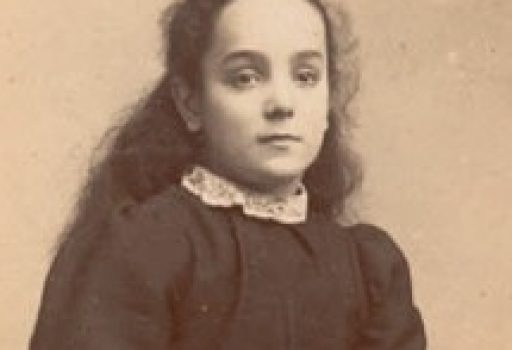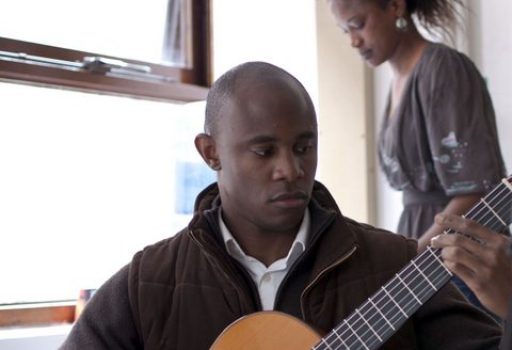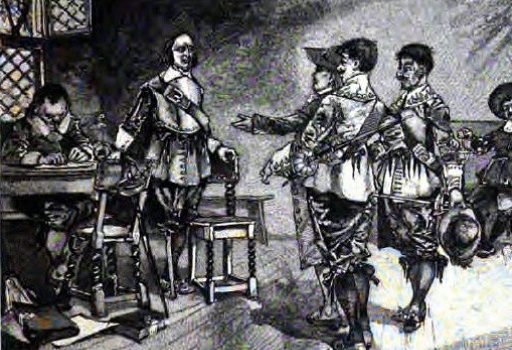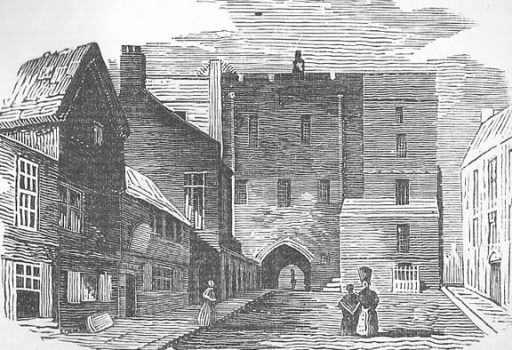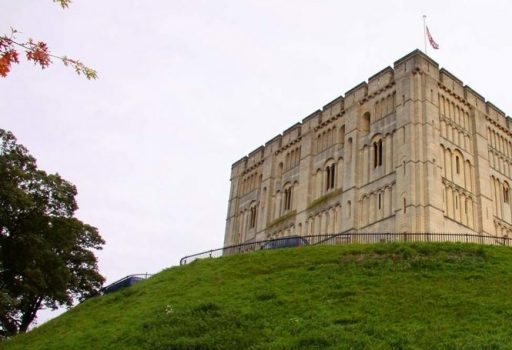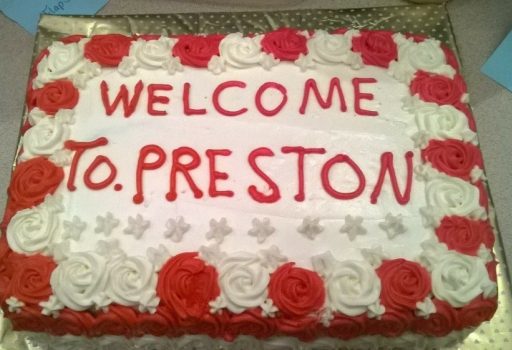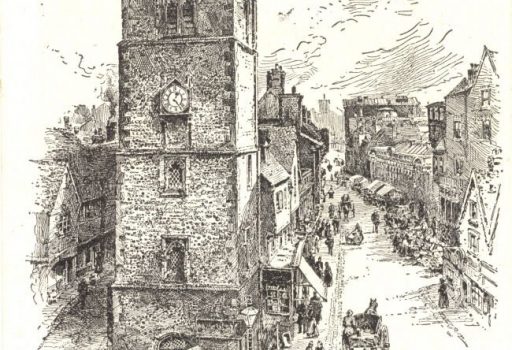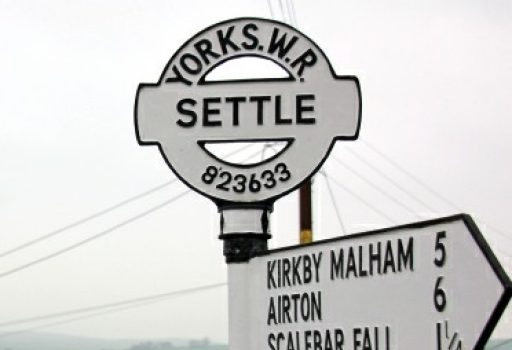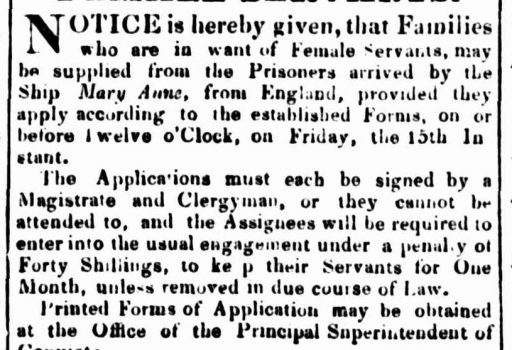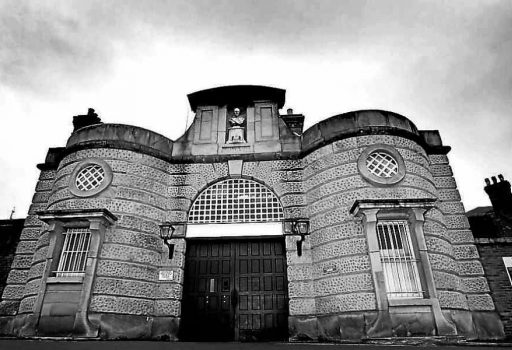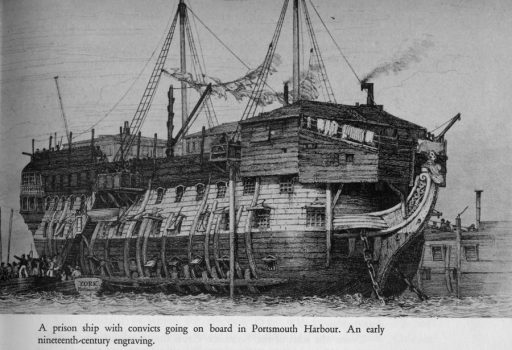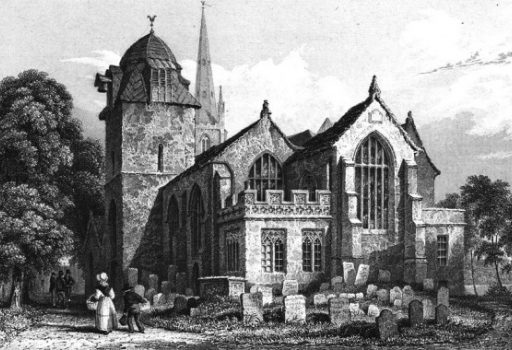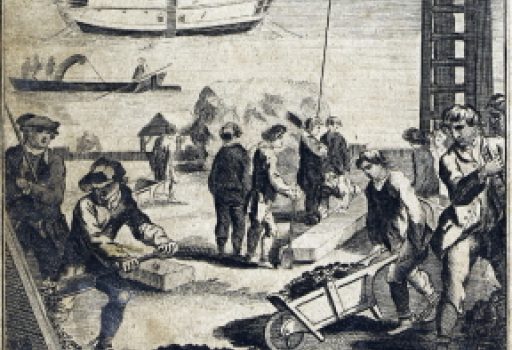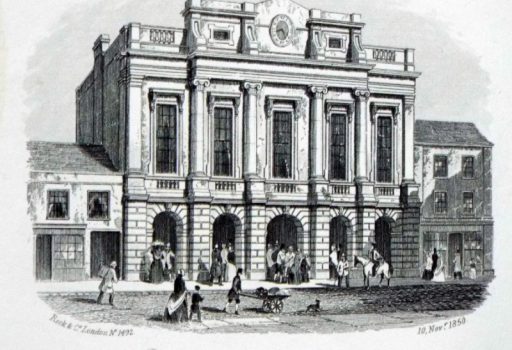In 1802 STEPHEN WAIN was convicted at the Derby Assizes for stealing 18 guineas and seven shillings in gold from Joseph Webster of Chesterfield. But he received only seven years transportation for what was a relatively serious crime. He was 23 when he arrived in New South Wales. Settled down with Elizabeth Mandeville when she arrived in 1809. They had two children. Elizabeth died ‘after delivering wheat to the stores’ in 1821. In 1826 he married 19 year old Elizabeth Reynolds, who’d just arrived on the Lady Rowena. He was then 53. He died the next year in 1827. It’s possible that Wain made full use of the transportation of young women, often on flimsy pretexts, as effectively ‘comfort brides’ for freed convicts.
In 1797 JOSEPH HOBSON, who worked as a hatter in Chesterfield, stole a box belonging to John Eyre and was sentenced for transportation to Australia. Presumably he travelled on one of the early fleets, and somehow escaped, for the next we hear of him is back in Derby in 1801 where he is sentenced to death for ‘returning from transportation’. This sentence was commuted and he was shipped back to New South Wales on the Glatton in 1803. Seven years later, presumably now in possession of his freedom, he married Jane Buckman, who’d sailed freely to the colony.
People no doubt migrated from Chesterfield to North America in the 18th century, for there were important towns called Chesterfield in Virginia and New Hampshire in colonial America. I’ve had trouble identifying any of them. But in July 1775 JOSEPH FELLOWS, a flax dresser from Sheffield sailed to Maryland on the Elkridge from the Port of London. He and 24 others aboard all travelled as indentured servants, who had signed up for a term of four years’ indenture. Their occupations ranged from husbandmen, cordwainers, carpenters and butchers to cutlers, cooks and combmakers. Fellows was the oldest emigrant, most were in the teens and early twenties. Three were women. On average, most such servants did not survive their term. At 39, Fellows would already have risked pulmonary disease from his dangerous job of processing flax before it was spun into linen. If these factors weren’t bad enough, soon after arrival, these migrants would have been caught up in the American Revolution.
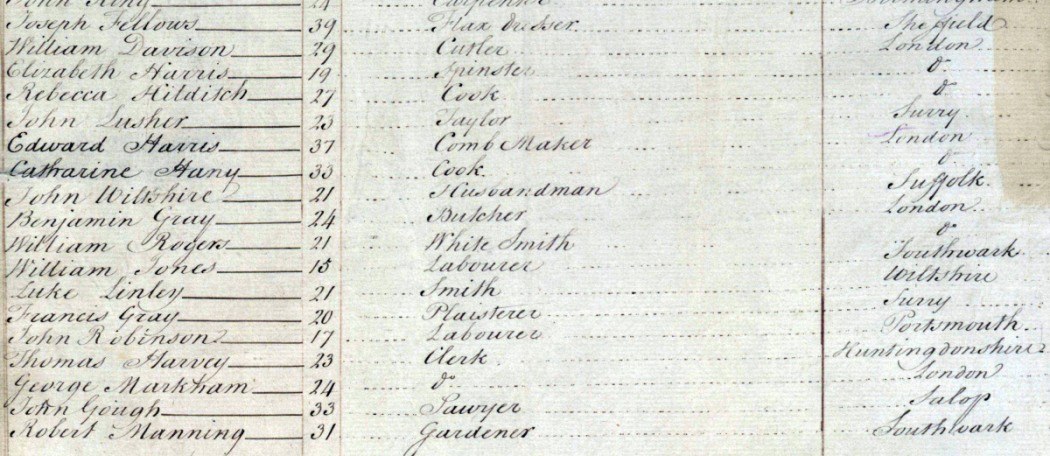
At the time of The Transports, the 1780s, the inventions of Richard Arkwright and others brought textile manufacture to the area around Chesterfield, attracted by its rivers and humidity. With local labour soon exhausted, children were imported from London workhouses to work the mills. Some of these pauper apprentices were as young as four when they arrived.
Litton Mill in Miller’s Dale was famous for exploiting the Poor Act of 1601, which enabled workhouses to pass children to employers for apprenticeship, relieving the authorities of their responsibility and providing the employers with cheap labour. Cressbrook Mill on the River Wye also received many such orphans from London.
Our partner for Chesterfield is ASSIST Sheffield, which helps destitute asylum seekers by providing accommodation, advice and other support.
ASSIST is a voluntary organisation - totally reliant on voluntary funding - that offers practical support to people in Sheffield who are homeless and destitute as a result of their seeking asylum in the UK. In the past year ASSIST has offered practical and moral support to 247 asylum seekers
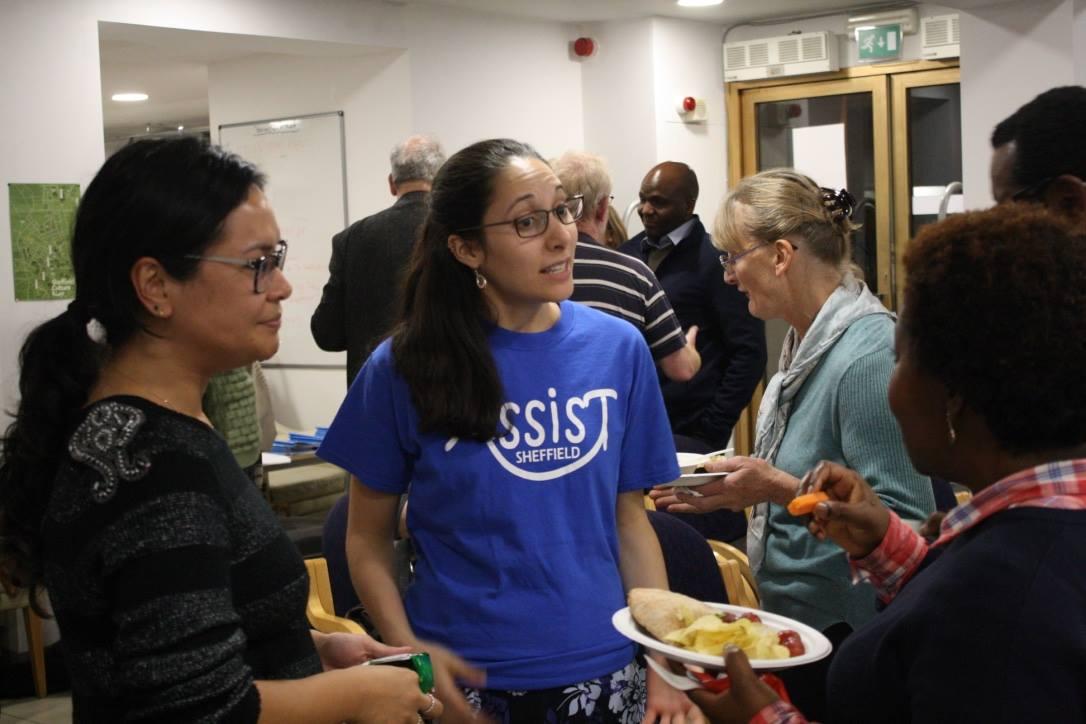
Orphan ROBERT BLINCOE lived in London’s St Pancras Workhouse from the age of four. When he was seven, he and 79 other children were sent north to a cotton mill at Lowdham in Nottinghamshire. They were promised a wonderful life in the north: they would enjoy roast beef and plum pudding, they would become ladies and gentlemen, with silver watches and cash in their pockets. But on arrival at the mill, they soon discovered life was not so glorious. There was no cloth on the table, nor knives, nor forks, nor plates. At dinner time, the boys pulled out the fore-part of their shirts as a plate to receive some hot boiled potatoes for supper. Then they scampered, like animals, to a safe corner where they could crouch and eat the food.
In 1803 Blincoe was moved to Litton Mill in Derbyshire where, as his memoir later revealed, he suffered abuse that went far beyond working 12 hours a day, six days a week. He was regularly beaten, had weights hung from his ears and was forced to eat candle ends. ORPHAN JOHN, another London workhouse boy who had been trafficked to Litton Mill, later reported that the owner’s sons beat him so hard his arm was broken. CAROLINE THOMPSON was beaten at Cressbrook Mill ‘til she went out of her mind’ while BETSY WITNOUGH was blinded by being hit. Unsurprisingly, there were high death rates in the mills, so it’s not clear how many of these incomers actually settled in the area.
Here's the scene after our show in Chesterfield, where we met up with local partner ASSIST Sheffield.
